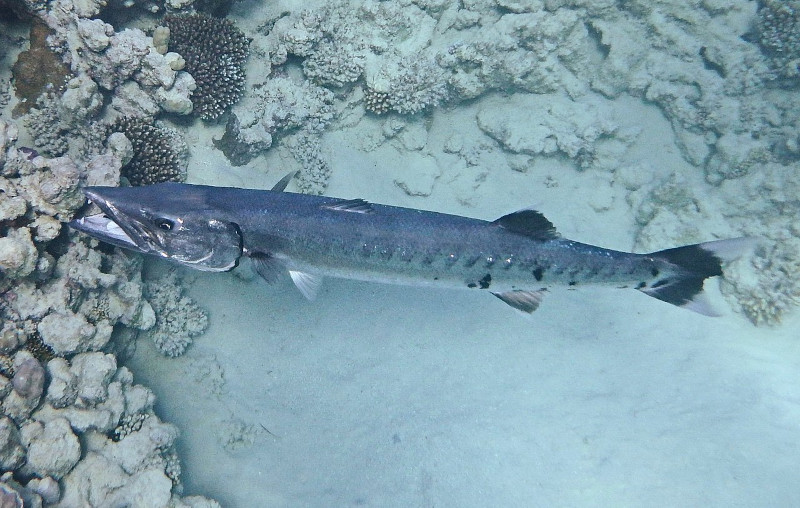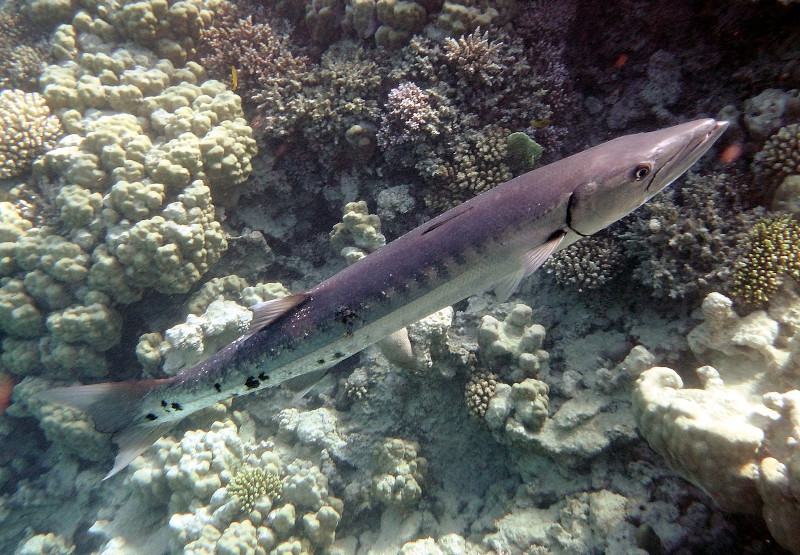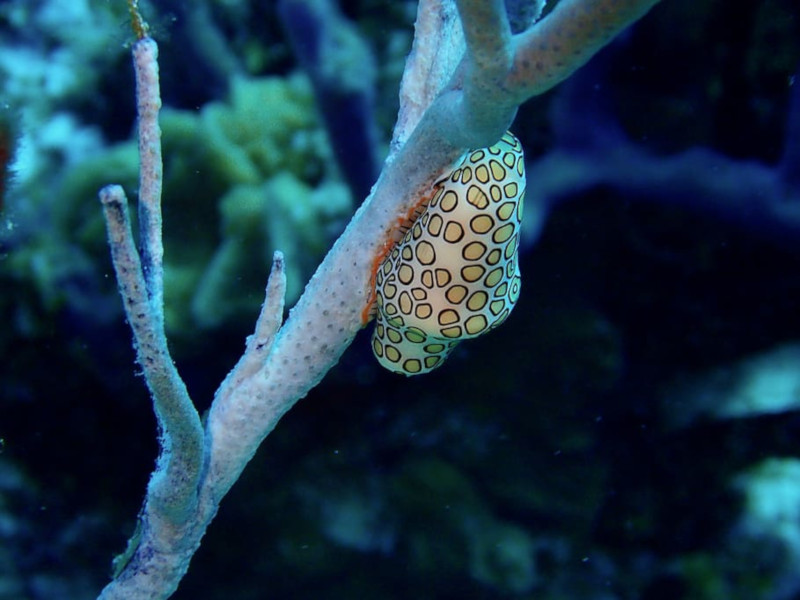
Great Barracuda Facts
- This remarkable denizen of the depths remains best known by the descriptive common name of the Great Barracuda. It also has other titles, though. These include the terms Commerson’s sea pike and barra, among others in the english language.
- Among scientific professionals, however, it’s perhaps better known by its technical name. Thankfully, that’s a term that’s comparatively easy for the layperson to pronounce. That’s because this marvel bears the moniker of the Sphyraena barracuda.
- It received that appellation due to the efforts of the German naturalist, Johann Julius Walbaum. The noted researcher accomplished the first formal recognition of it as a separate and distinct species. That scientifically noteworthy deed occurred in 1792.
- Thankfully, the Great Barracuda seems to be maintaining a population base that’s both stable and sufficient. That pleasant situation further appears to hold true throughout the entirety of its range. Accordingly, the IUCN lists the animal as Least Concern.
- The impressive fish nevertheless still faces several potential threats to its existence, at least. Most of these stem from the actions of humans. They’re the same dangers faced by most species today. They include the dual perils of habitat loss and climate change.
Related Articles




Great Barracuda Physical Description
The amazing Great Barracuda fully merits both the title and the attention it receives. That’s due to the fact that it distinguishes itself from others of its kind in intriguing ways. Its very name reflects one of these, because it represents the largest of all known barracudas.
This variety of fish also stands out because, unlike most species, this animal displays no notable degree of the physiological characteristic of sexual dimorphism. It’s therefore extremely difficult for the untrained observer to distinguish the sex of specimens visually.
Overall, both genders reach the same approximate size. This trait, however, serves as the source of the common name. Mature individuals typically attain a length ranging from 24 – 39 in (60 – 100 cm). It also averages a widely varying weight of 5.5 – 19.8 lb (2.5 – 9 kg).
Exceptional individuals do occur, though. Some even exceed these measurements greatly. Extraordinary specimens sometimes grow beyond 4.9 ft (1.5 m), and weigh in excess of 51 lb (23 kg). The longest confirmed specimen of this creature measured 6.6 ft (2m).
Mature examples possess a streamlined body shape, though rounder in the middle. The mouth is large, and contains two rows of razor-sharp teeth. Its lower jaw also juts out further than the upper one does. Uniquely, the top of the head develops as almost flat.
Mature Great Barracuda also display a fascinating pattern of coloring. The upper side of the body presents either a bluish gray or brown, or a combination. But the lower side shows a greenish hue that fades to silver on the sides. The belly generally appears an off-white.
- Kingdom: Animalia
- Phylum: Chordata
- Class: Actinopterygii
- Order: Istiophoriformes
- Family: Sphyraenidae
- Genus: Sphyraena
- Species: S. barracuda

Great Barracuda Distribution, Habitat, and Ecology
The stunning Great Barracuda evolved as endemic to an extremely broad expanse of the oceans of the world. Yet that range is also very specific. That’s true since it developed as native to an almost worldwide expanse of temperate, tropical, and subtropical waters.
It’s common in the western Atlantic, from Massachusetts, in the United States, to Brazil. Yet it also appears in the Caribbean Sea and the Gulf of Mexico. The fish also lives in the Red Sea, eastern Atlantic and Indo-Pacific. But it’s rarely spotted in the eastern Pacific Ocean.
This impressive creature also displays decidedly strong preferences in its choice of habitat. It mainly lives in shallower waters near the shore. Though the powerful fish does sometimes appear farther out at sea, even there it usually remains either at or very near the surface.
In all regions it lives in, however, this wonder of evolution is rarely seen at depths exceeding 325 ft (100 m). It spends the vast majority of its time in regions comprised of seagrasses, mangroves, and coral reefs. These provide it with shelter and a ready food source.
The magnficent Great Barracuda primarily lives a solitary life. Small groups do sometimes form on a temporary basis, however. This usually occurs due to the presence of a higher than usual food supply in a given area. They tend to move to slightly deeper areas with age.
This species generally hunts by ambush, utilizing short bursts of speed. They consume a wide variety of prey, consisting mainly of local fish species. Yet they also feed on smaller quantities of cephalopods and shrimp. Its own predators remain few, but includes sharks.
Species Sharing Its Range



Check out our other articles on 5 Beautiful North American Birds, Amazonian Manatee, McMurdo Dry Valleys, Giant Clam, Red Maple, Mangrove Monitor, Texas Blind Salamander









Leave a Reply